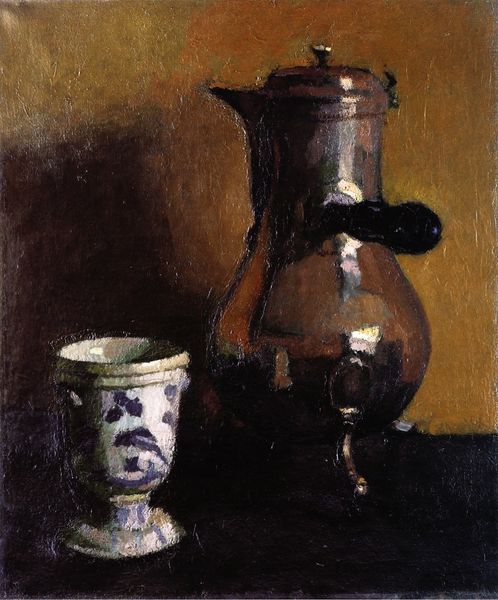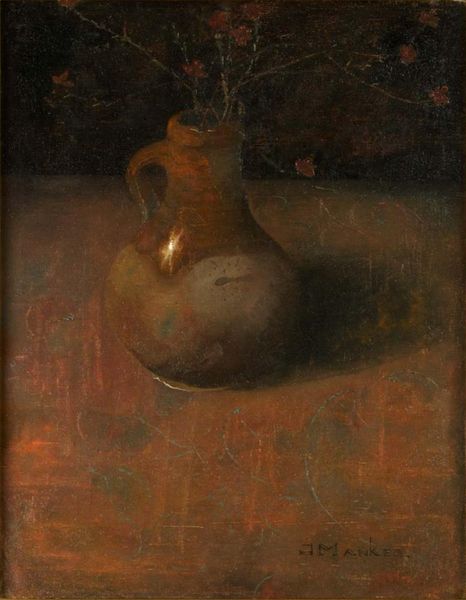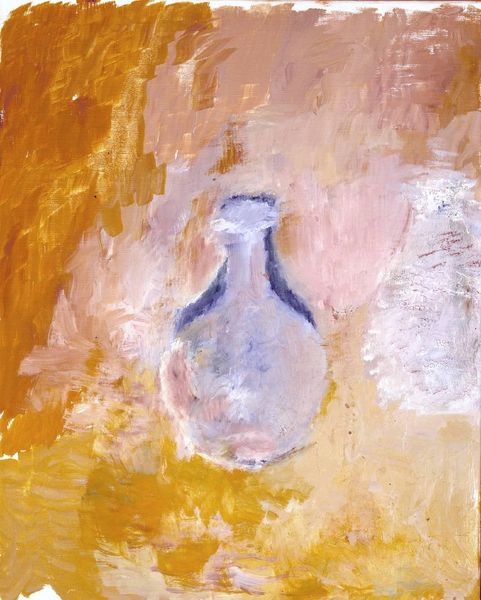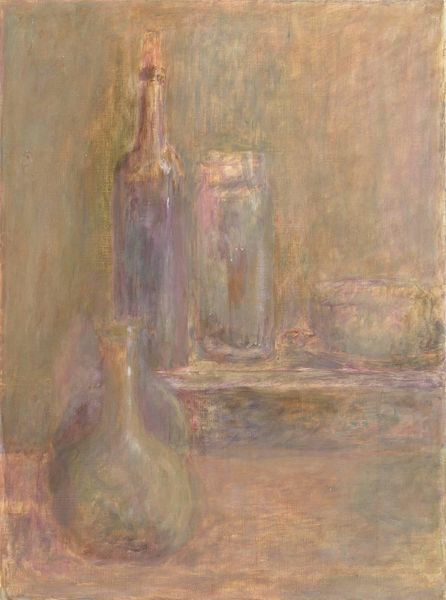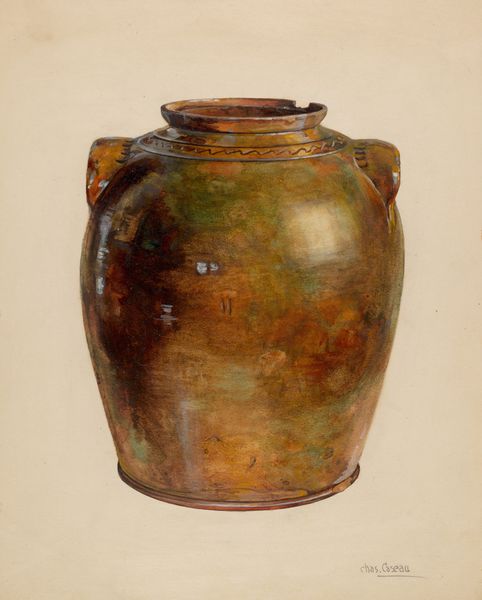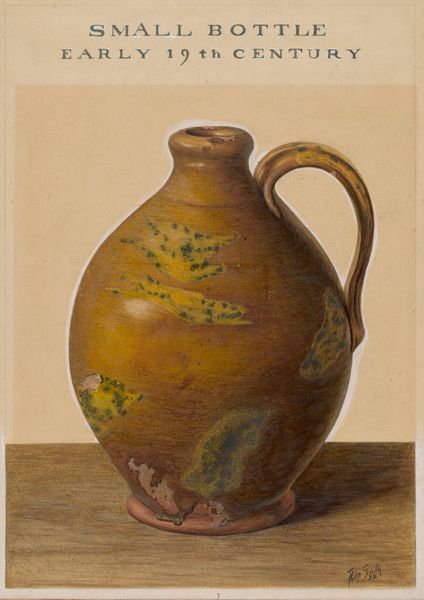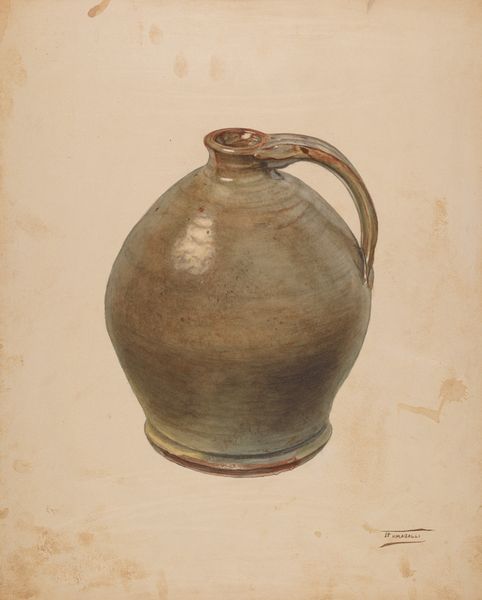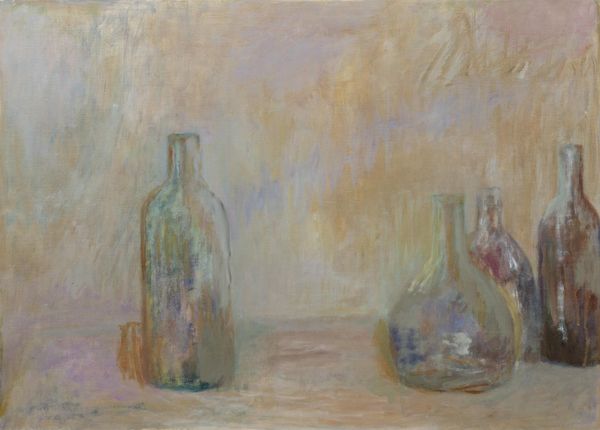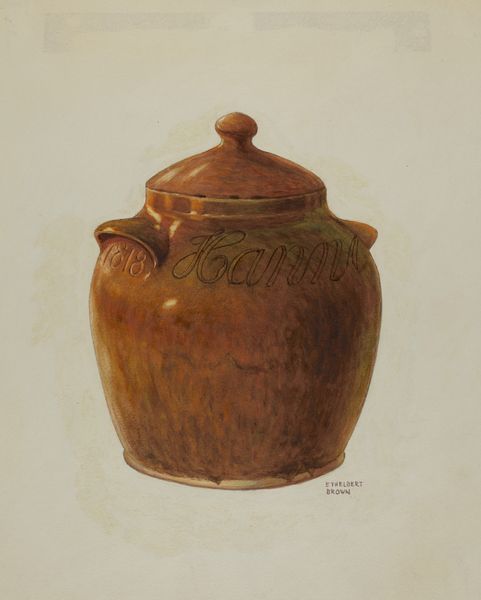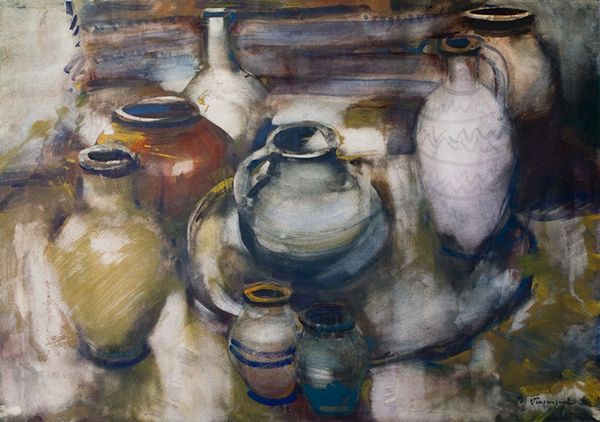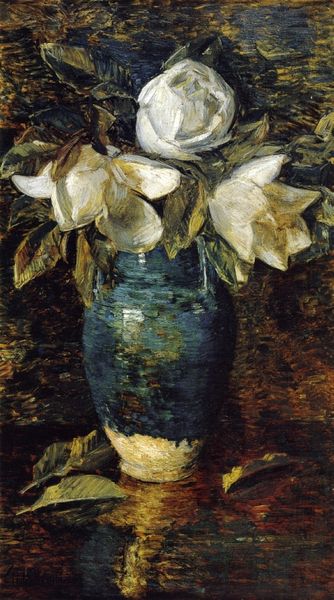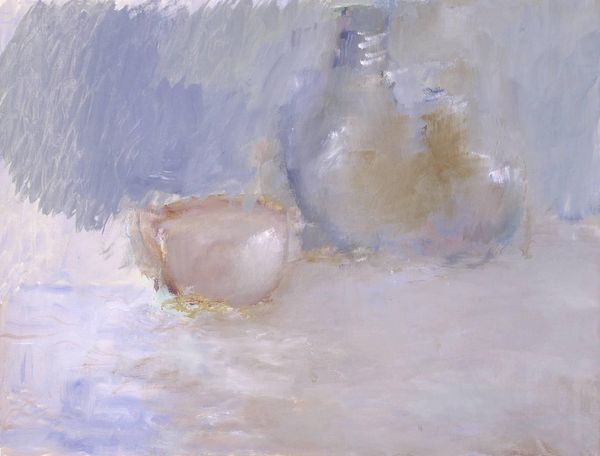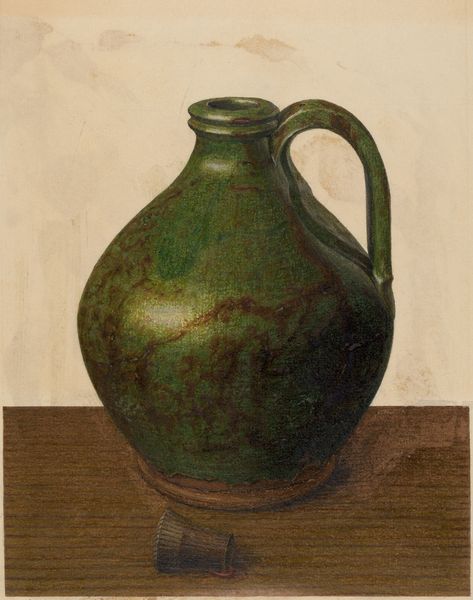
oil-paint
#
impressionism
#
oil-paint
#
oil painting
#
painterly
#
post-impressionism
Copyright: Public domain
Editor: So, this is Toulouse-Lautrec's "Coffee Pot," painted in 1884 using oil paint. I find the brushstrokes so expressive and immediate, almost unfinished. What can you tell me about this piece? Curator: Let's start with the object itself: a coffee pot. Think about the materiality of this everyday object and its production. Was this pot mass-produced, or a unique piece? Lautrec’s decision to elevate a commonplace item asks us to consider the value we assign to different types of labor. Do you notice how the loose, painterly strokes don't try to disguise the making process? Editor: Right, it feels almost rebellious in a way, like he's resisting the pressure to create something conventionally "beautiful" and embracing the rough edges of everyday life. The brown color also feels a little bit sad. Curator: Consider the context. Impressionism challenged the traditional hierarchy that put history painting above still life. Lautrec here further subverts this, focusing not on some grand scene, but on the utensils connected with service and perhaps domestic labor. How do you see the relationship between the pot's function, as a container involved with repetitive tasks, and the aesthetic choices Lautrec makes? Editor: So, the quick, almost frantic brushstrokes could reflect the fast pace of labor? Instead of portraying luxury and opulence, he focuses on these repetitive mundane moments. It almost sounds political. Curator: Precisely. By focusing on the materials and processes around this very simple moment, Lautrec implicitly comments on the society that consumes what the pot produces. Considering that the location is labeled as “private collection” one can speculate how the elite are fascinated and intrigued by an interpretation of labor that doesn’t implicate them. Editor: I never considered that! Thinking about art in terms of labor and consumption, it reveals so much about its social role. Curator: Exactly! It’s not just about the image, but also about the who, how, and why of its creation and consumption.
Comments
No comments
Be the first to comment and join the conversation on the ultimate creative platform.
